In recent years the non-conventional energy sources is playing an important role in decreasing carbon emission and exhaustion of fossil fuel. The application of solar power and fuel cells is playing an important role for residential loads. In order to attain high consumption rate of the solar power, the maximum power point trackers will be considered for two string photovoltaic panels in a conventional 5-KW DC distribution system having voltage and current at maximum power as 35.4V and 4.94A which will be further coupled to ac grid with a bidirectional inverter. In this system, two PV strings and two MPPTs are implemented. The perturb and observe method is applied for maximum power point tracking for obtaining the current balancing of two MPPT modules in parallel. Perturb and observe method is compared with incremental conductance method and bidirectional inverter is replaced with multilevel inverter and results are obtained using MATLAB/ SimulinkSoftware.
Keywords |
| DC distribution system, Maximum Power point tracking, Photovoltaic (PV), solar power, Perturb and
observe, incremental conductance. |
INTRODUCTION |
| Renewable energy resources such as wind, tidal, solar, small hydropower and biomass are becoming the best option for
generating electric power due to their low environmental effects. Among all the renewable energy resources solar
energy is a main and appropriate alternative energy source to overcome the persistent shortages and unreliability of
power supply. Solar energy has offered promising results in the quest of finding the solution to the problem. The
harnessing of solar energy using PV modules comes with its own problems that arise from the change in insulation
conditions. These changes in insulation conditions severely affect the efficiency and output power of the PV modules
[1-3].A great deal of research has been done to improve the efficiency of the PV modules. |
| A number of methods of how to track the maximum power point of a PV module have been proposed to solve the
problem of efficiency and products using these methods have been manufactured and are now commercially available
for consumers [1- 3]. As the market is now flooded with varieties of these MPPT that are meant to improve the
efficiency of PV modules under various isolation conditions it is not known how many of these can really deliver on
their promise under a variety of field conditions. |
| This research then looks at how a different type of converter affects the output power of the module and also
investigates if the MPPT that are said to be highly efficient and to track the true maximum power point under the
various conditions [1]. A MPPT is used for extracting the maximum power from the solar PV module and transferring
that power to the load [4, 5]. |
| A dc/dc converter (steps up/ step down) serves the purpose of transferring maximum power from the solar PV module
to the load. A dc/dc converter acts as an interface between the load and the module By changing the duty cycle the load impedance as seen by the source is varied and matched at the point of the peak power with the source so as to transfer
the maximum power [5]. |
| Therefore MPPT techniques are needed to maintain the PV array’s operating at its MPPT [6]. Many MPPT techniques
have been proposed in the literature; example are the Perturb and Observe (P&O) methods [4, 6-9], Incremental
Conductance (IC) methods [7, 10- 12], Fuzzy Logic Method [2, 4, 6, 11], etc. In this paper two most popular of MPPT
technique (Perturb and Observe (P&O) methods and Incremental Conductance methods) are compared using
MATLAB tool Simulink. |
| This paper is organized as follows: Section I gives the Introduction to the MPPT Techniques. Section II gives related
work Section III gives the 5-kw dc distribution system introduction. Section IV gives the DC-DC Converter
Information. Section V gives the Problem Overview. Section VI gives the MPPT algorithms and Section VII and VIII
give the simulation results and the conclusion respectively |
RELATED WORK |
| Power-electronic systems for the grid integration of renewable energy sources: a survey” J. M. Carrasco, L. G.
Franquelo, J. T. Bialasiewicz, E. Galvan, R. C. P. Guisado, Ma. A. M. Prats, J. I. Leon, and N. Moreno-Alfonso, IEEE
Trans. Ind. Electron., vol. 53, no. 4, pp. 1002– 1016, Aug. 2006. |
| The use of distributed energy resources is increasingly being pursued as a supplement and an alternative to large
conventional central power stations. The specification of a power-electronic interface is subject to requirements related
not only to the renewable energy source itself but also to its effects on the power-system operation, especially where
the intermittent energy source constitutes a significant part of the total system capacity. In this paper, new trends in
power electronics for the integration of wind and photovoltaic (PV) power generators are presented. A review of the
appropriate storage-system technology used for the integration of intermittent renewable energy sources is also
introduced. Discussions about common and future trends in renewable energy systems based on reliability and maturity
of each technology are presented |
| Multilevel inverter for grid-connected PV system employing digital PI controller,” J. Selvaraj and N. A. Rahim,
IEEE Trans. Ind. Electron., vol. 56, no. 1, pp. 149–158, Jan. 2009. |
| This paper presents a single-phase five-level photovoltaic (PV) inverter topology for grid-connected PVsystems with a
novel pulse width-modulated (PWM) control scheme. Two reference signals identical to each other with an offset
equivalent to the amplitude of the triangular carrier signal were used to generate PWM signals for the
switches.A digital proportional-integral current control algorithm is implemented in DSP TMS320F2812 to keep the
current injected into the grid sinusoidal and to have high dynamic performance with rapidly changing atmospheric
conditions. The inverter offers much less total harmonic distortion and can operate at near-unity power factor. The
proposed system is verified through simulation and is implemented in a prototype, and the experimental results are
compared with that with the conventional single-phase three-level grid-connected PWM inverter. |
5-KW DC DISTRIBUTION SYSTEM |
| Two MPPTs are implemented in a 5-KW dc distribution system. Each MPPT rating is 2.5KW.Dc distribution system is
connected to ac grid through bidirectional inverter. In a dc-distribution system, a bidirectional inverter is required to
control the power flow between dc bus and ac grid, and to regulate the dc bus to a certain range of voltages Since the
photovoltaic (PV) array voltage can vary from 0 to 600 V, especially with thin-film PV panels, the MPPT topology is
formed with buck and boost converters to operate at the dc-bus voltage around 380 V, reducing the voltage stress of its
followed inverter. |
DC-DC CONVERTER |
| A. BUCK CONVERTER |
| The buck converter is called as the step down converter [15]. Buck converter converts its input voltage into a lower
output voltage, where the conversion ratio M = Vo/Vi varies with the duty ratio D of the switch. |
B. BOOST CONVERTER |
| The boost converter is also known as the step-up converter. The name implies that converting a low input-voltage to a
high out-put voltage; it works like a reversed buck converter [15, 16]. |
PROBLEM OVERVIEW |
| MPPT techniques are used to find the voltage VMPP or current IMPP at which a PV array should operate to obtain the
maximum power output PMPP under a given temperature and irradiance. It is noted that under partial shading
conditions, in some cases it is possible to have multiple local maxima, but overall there is still only one true MPP. Most
techniques respond to changes in both irradiance and temperature, but some are specifically more useful if temperature
is approximately constant. Most techniques would automatically respond to changes in the array due to aging, though
some are open-loop and would require periodic fine tuning. In our context, the array will typically be connected to a
power converter that can vary the current coming from the PV array [6, 11, 14, and 15]. |
MPPT CONTROL ALGORITHM |
A. Perturb and Observe (P&O) |
| In this algorithm a slight perturbation is introduced in the system [7]. Due to perturbation the power of the solar module
changes. If the power increases due to the perturbation then the perturbation is continued in that direction [7]. After the
peak power is reached the power at the next instant decreases and hence after that the perturbation reverses. When the
steady state is reached the algorithm oscillates around the peak point. In order to keep the power variation small the
perturbation size is kept very small. A PI controller then acts moving the operating point of the module to that
particular voltage level. It is observed that there some power loss due to this perturbation also the fails to track the power under fast varying atmospheric conditions. But still perturb and observe algorithm is very popular and simple
[7]. |
| B. Incremental Conductance (IC) |
| The disadvantage of the perturb and observe method to track the peak power under fast varying atmospheric condition
is overcome by IC method [7, 18]. The IC can determine that the MPPT has reached the MPP and stop perturbing the
operating point. If this condition is not met, the direction in which the MPPT operating point must be perturbed can be
calculated using the relationship between dl/dV and –I/V [7] This relationship is derived from the fact that dP/dV is
negative when the MPPT is to the right of the MPP and positive when it is to the left of the MPP. This algorithm has
advantages over P&O in that it can determine when the MPPT has reached the MPP, where P&O oscillates around the
MPP. Also, incremental conductance can track rapidly increasing and decreasing irradiance conditions with higher
accuracy than perturb and observe [7]. One disadvantage of this algorithm is the increased complexity when compared
to P&O [7]. |
SIMULATION RESULTS |
| The above figures are related to perturb and observe method with bidirectional inverter.Fig6 (a) shows the constant
irradiance Fig6 (b) shows the dc output of mppt because mppt is nothing but a dc-dc converter and fig6(c) shows the
perfect ac output voltage and mainly Fig6 (g) shows the 5000w or 5kw power to corresponding voltage on a graph.
From the above figures it is concluded that perturb and observe method is very effective method to obtain maximum
power point tracking. |
| The above figures are related to incremental conductance method with multilevel inverter fig (a) shows the constant
irradiance and fig (b) shows the dc bus voltage variation with help of multilevel inverter we are obtained three phase
voltage and line voltages effectively. Incremental conductance method tracks the peak power under fast varying
atmospheric conditions. |
CONCLUSION |
| This paper has presented a comparison of two most popular MPPT controllers, Perturb and Observe Controller with
bidirectional inverter and Incremental Conductance Controller with multilevel inverter. This paper focus on comparison
of two different converters which will connect with the controller. One simple solar panel that has standard value of
isolation and temperature has been included in the simulation circuit. The best controller for MPPT is incremental
conductance controller. This controller gives a better output value. |
Figures at a glance |
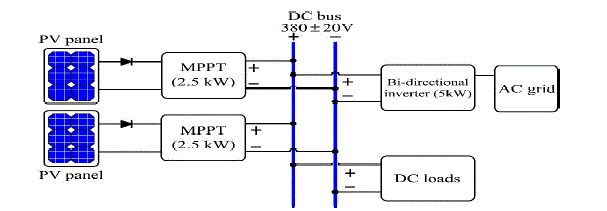 |
 |
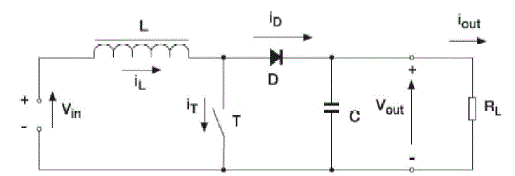 |
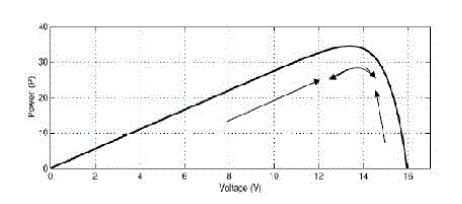 |
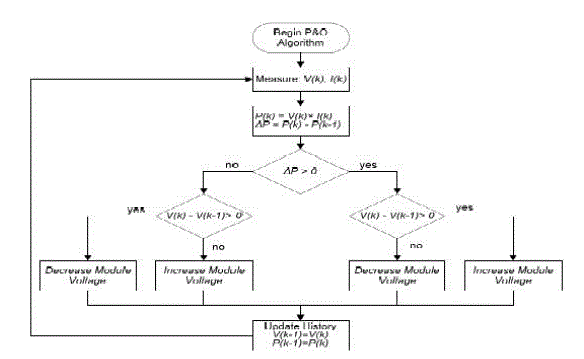 |
| Figure 1 |
Figure 2 |
Figure 3 |
Figure 4a |
Figure 4b |
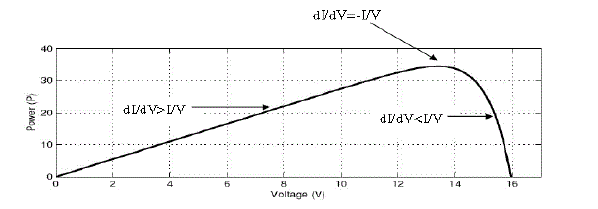 |
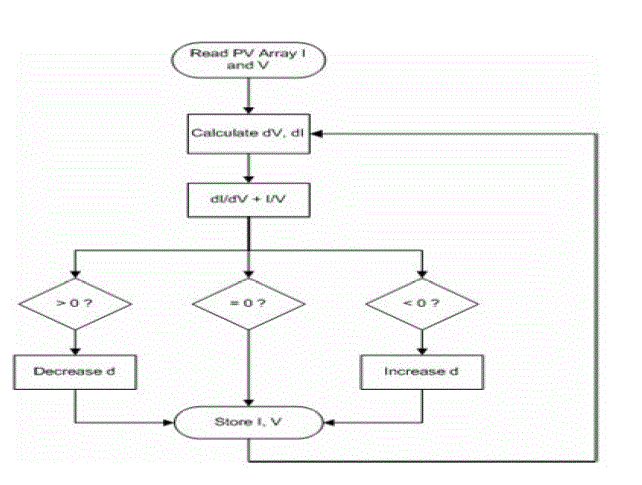 |
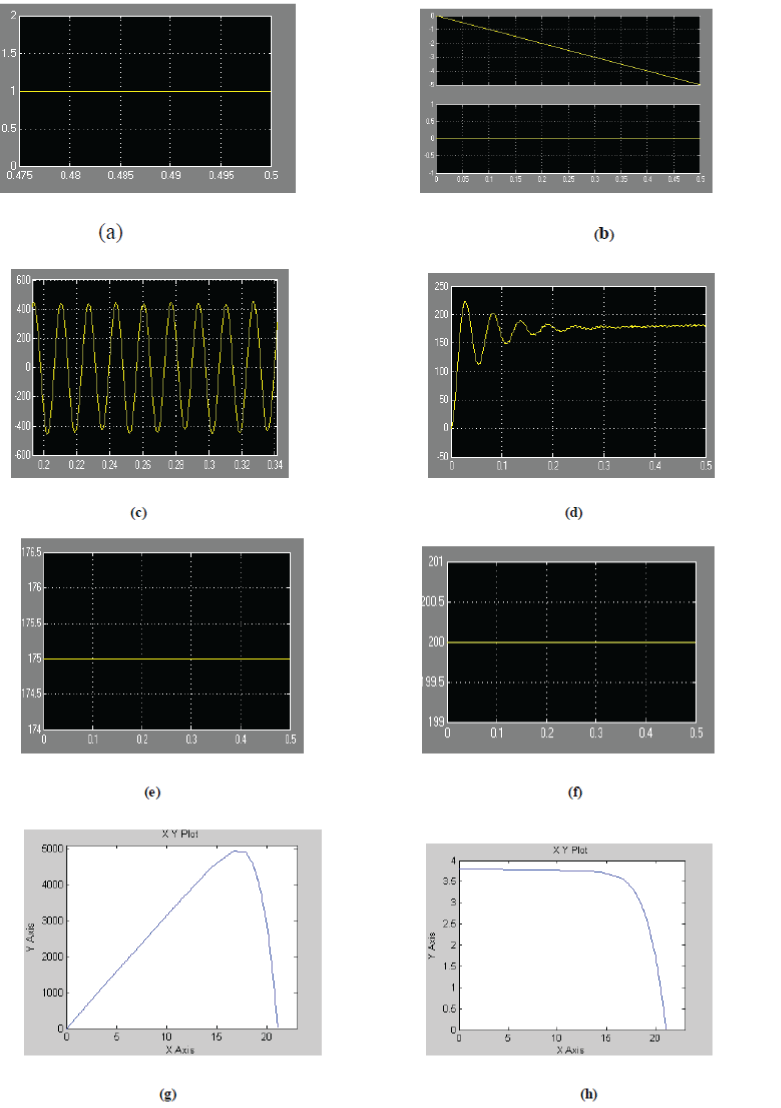 |
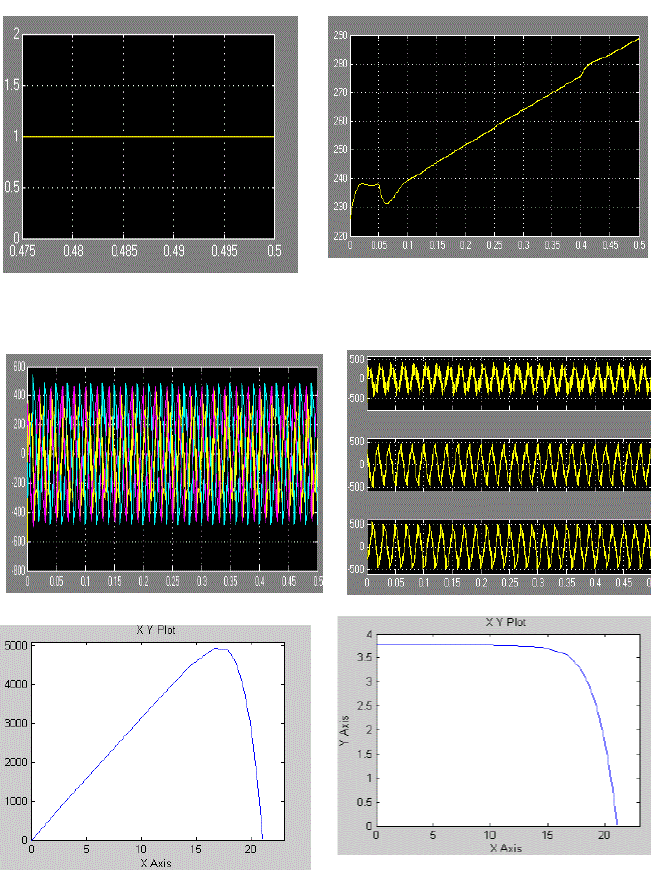 |
| Figure 5a |
Figure 5b |
Figure 6 |
Figure 7 |
|
References |
- Yuan-Chih Chang, Chia-Ling Kuo, Kun-Han Sun, and Tsung-Chia Li âÃâ¬ÃÅDevelopment and Operational Control of Two-String Maximum PowerPoint Trackers in DC Distribution Systems âÃâ¬Ã IEEE Trans. Power Electron., vol. 28, no. 4, APRIL 2013.
- R. S.Lewis, "Antartic Research and Relevant of Science," in Bulletin of the Atomic Scientists, vol. 26, pp. 2,1970.
- Y.-H. Chang and C.-Y. Chang, "A Maximum Power Point Tracking of PV System by Scaling Fuzzy Control," presented at International MultiConference of Engineers and Computer Scientists, Hong Kong, 2010.
- S.Mekhilef, "Performance of grid connected inverter with maximumpower point tracker and power factor control,"International Journal ofPower Electronics, vol. 1, pp. 49-62, 2008.
- M.E.Ahmad and S.Mekhilef, "Design and Implementation of a Multi Level Three-Phase Inverter with Less Switches and Low Output VoltageDistortation," Journal of Power Electronics, vol. 9,pp. 594-604, 2009.
- S. Chin, J. Gadson, and K. Nordstrom, "Maximum Power Point Tracker," Tufts University Department of Electrical Engineering andComputer Science, pp.1-66,2003.
- R. Faranda and S. Leva, "Energy Comparison of MPPT techniques for PV Systems," WSES Transaction on Power Systems, vol. 3, pp. 446-455, 2008.
- Vikrant.A.Chaudhari, "Automatic Peak Power Traker for Solar PV Modules Using dSpacerSoftware.," in Maulana Azad National InstituteOf Technologyvol. Degree of Master of Technology In Energy. Bhopal: Deemed University, pp. 98, 2005.
- T. P. Nguyen, "Solar Panel Maximum Power Point Tracker," in Department of Computer Science & Electrical Engineering: University ofQueensland ,pp. 64, , 2001.
- B. S, Thansoe, N. A, R. G, K. A.S., and L. C. J., "The Study and Evaluation of Maximum Power Point Tracking Systems," InternationalConference on Energy and Environment 2006 (ICEE 2006), pp. 17-22, 2006.
- C. S. Lee, " A Residential DC Distribution System with Photovoltaic Array Integration.," vol. Degree of Honors Baccalaureate of Science inElectrical and Electronics Engineering,pp. 38, 2008.
- T. Esram and P. L.Chapman, "Comparison of Photovoltaic Array Maximum Power Point Tracking Techniques," in 9. Urbana.
- E. I and O. Rivera, "Maximum Power Point Tracking using the Optimal Duty Ratio for DC-DC Converters and Load Matching in PhotovoltaicApplications," IEEE, pp. 987-991, 2008.
- G. Adamidis, P. Bakas, and A. Balouktsis, "Photovoltaic System MPPTracker Implementation using DSP engine and buck âÃâ¬Ãâ boost DCDCconverter."
- M. Azab, "A New Maximum Power Point Tracking for Photovoltaic Systems," in WASET.ORG, vol. 34,pp. 571-574, 2008.
- H. Knopf, "Analysis, Simulation, And Evaluation of Maximum Power Point Tracking (MPPT) Methods for a solar power vehicle," inElectrical and Computer Engineering, vol. Master of Science in Electrical and Computer Engineering: Portland State University pp. 177, 1999.
- T.S.USTUN and S. Mekhilef, "Effects of a Static Synchronous Series Compensator (SSSC) Based on Soft Switching 48 Pulse PWM Inverteron the Power Demand from the Grid," Journal of Power Electronics, vol. 10, pp. 85-90, 2010.
- A. Oi,"Design and Simulation of Photovoltaic Water Pumping System," in Electrical Engineering, vol. Master of Science in ElectricalEngineering. San Luis Obispo: California Polytechnic State University, pp. 113. , 2005.
- S.Mekhilef and M. N. A. Kadir, "Voltage Control of Three-Stage Hybrid Multilevel Inverter Using Vector Transformation," IEEETransactions on Power Electronics, vol. 25, pp. 2599-2606, 2010.
|